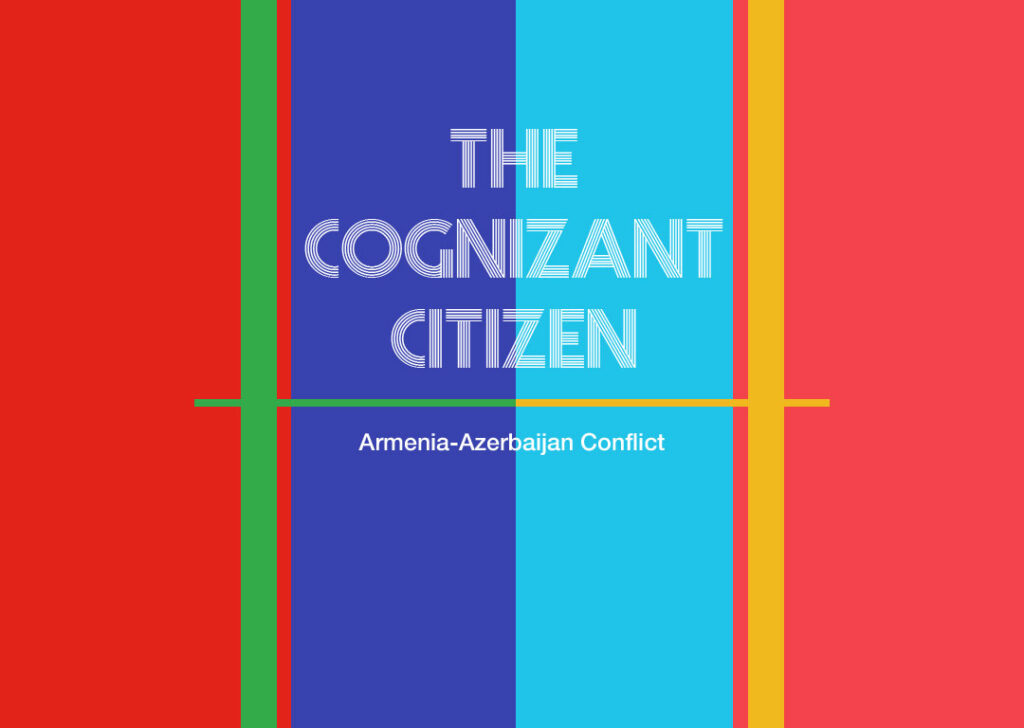
The recent back and forth artillery fire between Armenia and Azerbaijan seems to have caught the entire world off guard. It is not everyday that we hear of air to land combat taking place between countries. The sudden seeming conflict has actually been lying dormant for decades. Rising tensions between the two countries and over a century’s worth of disputes finally erupted on the morning of September 27th. Each country accused the other of attacks that were uncalled for.
What Happened?
Armenia claimed that Azerbaijan bombed the Nagorno-Karabakh region (NKR) and hence shot down Azeri forces in retaliation. The Azeri Government did not take this lightly, leading to further bombing of the region as well as mobilization of their military forces. Each subsequent action provoked a harsher response from the other side.
Not only are innocent lives at stake here but other powerful countries such as Turkey and Russia have got involved. Turkey has proclaimed its support for Azerbaijan in their agenda and is allegedly supplying them with armed forces. Russia has called for a show of restraint from both sides. However, were they to intervene against Turkey, which is a part of the North Atlantic Treaty Organisation (NATO) consisting of the EU and the USA, it would further escalate the conflict.
History of the Conflict
Like for most conflicts throughout history, there is no single country to blame here. Armenians and Azerbaijanis have been at each other’s throats since as early as the Ottoman Empire in the early 20th century.
One of the major events in this conflict came at the end of the 1980s. In the 1920s, the Soviet Union had established the Nagorno-Karabakh region within the Azerbaijan SSR and not the Armenia SSR even though the cultural majority of the land were Armenians. In the late 1980s as the Soviet Union began to collapse, this led to widespread unrest and movements to have the region incorporated with the Armenia SSR instead. It went as far as the regional council of Nagorno Karabakh voting successfully to secede from the Azerbaijan SSR, much to the displeasure of the Azerbaijanis. In light of these events, Azeris took to the streets in the form of violent protests against Armenians in the country. There were mass killings of Armenian inhabitants of Azerbaijan to the extent that Soviet troops had to intervene to prevent the atrocities. Not only did the guilty go unpunished but even gained titles as national heroes.
The inter-Ethnic strife led to a large-scale population exchange between the two countries, with citizens trying to go back to their homeland fearing for their safety. In the process, there was no shortage of casualties on either side. What ensued was an intense military struggle to capture Nagorno Karabakh by both countries. The region was caught in the crossfire of a historical feud much greater than them that came at the cost of civilians.
Ultimately in 1994, the two countries signed a ceasefire. It was however not to the satisfaction of either country due to the largely unresolved state of the territorial dispute that caused the mess in the first place. To this day the NKR is controlled to a large extent by Armenian forces and is under economic blockade by Azerbaijan.
How Does This Affect the Rest of the World?
The conflict sparks international concerns as well. The major reason is that countries like Russia, Turkey, and Iran are invested in the South Caucasus to varying degrees. Moreover, it’s believed if the fighting goes on, it might become a larger regional conflict.
Another reason is that a number of major gas and oil pipelines pass through this area. The 4 major pipelines— the Baku-Tbilisi-Ceyhan oil pipeline, the Western Route Expert oil pipeline, the Trans Anatolian gas pipeline, and the South Caucasus gas pipeline— supply mainly to Russia and Turkey. If this conflict does continue, the economies of various countries will be severely affected.
Support for the Countries
Russia has a security alliance with Armenia, even while it sells weapons to both the countries. They also have a military base in Armenia, yet Moscow is trying to strike a balance between the two publicly. Meanwhile, Azerbaijan helps supply 5% of Europe’s gas and oil demands, helping to reduce their dependence on Russia. These alliances are put at risk due to the ongoing conflict.
Turkey has declared its support for Azerbaijan. It has been said that Turkey has sent Syrian fighters to fight alongside Azerbaijan’s soldiers. Armenia has claimed that the Turkish air force is also fighting with Azerbaijan, a statement which has been denied. Several fighters in Syria’s Idlib province have mentioned that a Turkish private security company started a recruitment drive in September for men to send to Azerbaijan.
With the exception of Turkey, other countries have called for restraint. A meeting of the United Nations Security Council affirmed the primary role of the Minsk Group, chaired by France, Russia, and the United States, of the Organization for Security and Co-operation in Europe, in mediating between the two regions on 29 September.
Comparison with India and Pakistan
This dispute isn’t too different from the India-Pakistan conflict over Kashmir. It too involves a territory that was aligned with a country of a differing cultural and religious majority. This also led to continuous conflict spanning decades with both sides blaming the other for attacks, leading to the loss of civilian rights, suspension of privileges, and even human rights. The abolishment of Article 370 in 2019 which revoked the special status of Jammu and Kashmir, and made all provisions of the Indian constitution applicable to the state is one such example. This move was condemned by the Pakistan Foreign Ministry, and led to a tense situation between the two countries. All the while, the citizens of the region remain oppressed and constantly at the risk of losing their lives.
Ceasefire
Around midnight GMT of 10th October 2020, Russian Foreign Minister Sergei Lavrov reported that Armenia and Azerbaijan had agreed on a humanitarian ceasefire after hours of talks in Moscow. Hostilities were formally halted to allow an exchange of the prisoners and recovery of the dead, facilitated by the International Committee of the Red Cross. The Republic of Artsakh proved to be a mediator between the two countries. As both the countries have accused the other of bombarding their regions, Artsakh would report minor clashes. As of 13th October 2020, the Presidential Office of Artsakh has accused Azerbaijan of launching a new massive attack.
With about 80 civilians dead and over 200 injured, the conflict has caught the attention of leaders worldwide. Protests broke out all around the world by Armenians as well as Azerbaijanis living abroad. Although they agreed on a ceasefire, the accusations being thrown back and forth might escalate at one point or the other. Nagorno-Karabakh has been a battlefield and the end doesn’t seem near at the moment.
Written by Gautam Marathe and Kaavya Azad for MTTN
Featured Image by Swagat Sarkar for MTTN
Images Sources: BBC, Asia Times, University of Kent
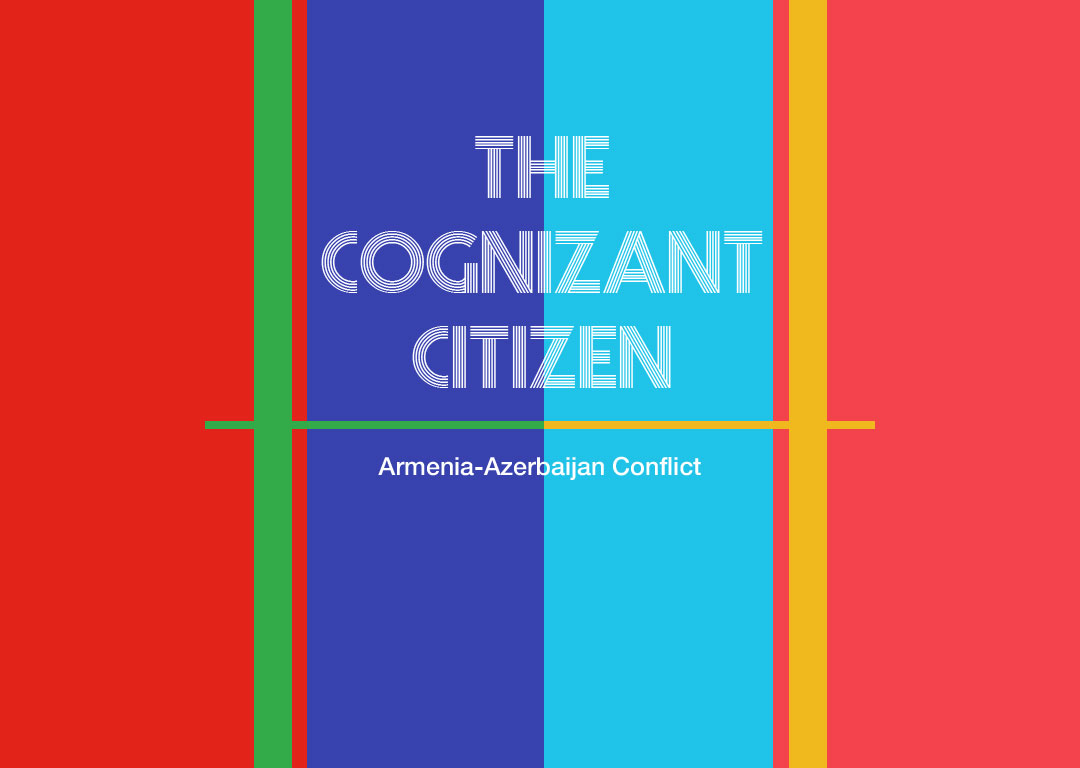
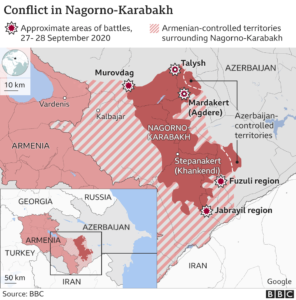
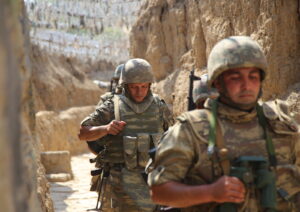
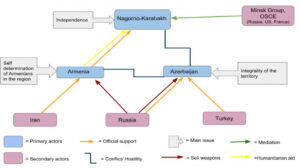
Leave a Reply
You must be logged in to post a comment.